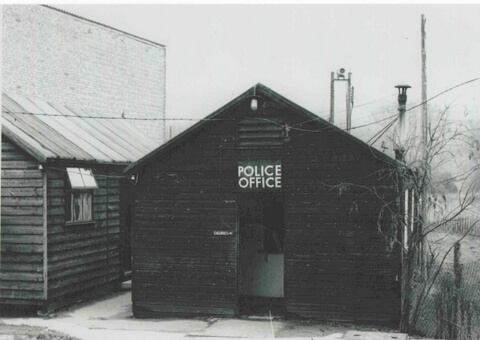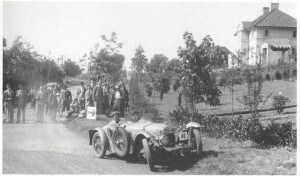Bury End was a hamlet which included Bury Farm and was separate from Amersham. It is said that it was originally named “Borough End” because Amersham was a Borough. What is now Tesco’s car park opposite Bury Farm was once a cotton mill (see below) and later became a row of houses and the Wheatsheaf pub and Mrs Chalwin’s shop. The Wheatsheaf was first licensed to sell beer in 1830 and was bought by Weller Brewery in 1842. It lost its license in 1936 and closed a year later, despite a petition by 151 regulars.
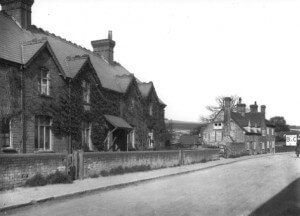
In 1939, the houses were condemned at the same time as the row of houses in Market Square. However, although the Market Square houses were demolished at the outbreak of World War II, the Bury End houses were not. The residents had been moved out to Field Way and Hill Way (off Gore Hill) and during the war the houses and the pub were occupied by evacuees from London. Most of the houses were demolished after the war except for the houses (below left) next to Brazils which were demolished in 1988 before Tescos was built. The houses probably belonged to Albert Podbury. He was once a great friend of John Brazil’s but they fell out and he refused to sell the land and even tried to stop the sale in his will.
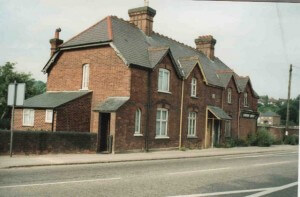
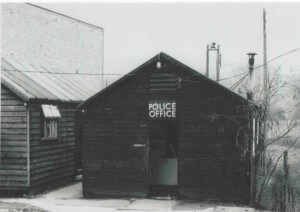
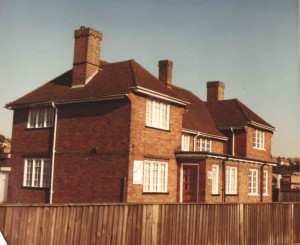
This was for many years the Police Station. An Inspector and a Sergeant lived in the 2 houses and along the side was a large wooden hut used as offices. The police station had an air-raid siren, which was used to summon the fire service right up to the 1960s. When the Police Station moved to Amersham-on-the-Hill, it was sold and for many years was a Solicitors by the name of Stones. There used to be a pound, where stray cattle were kept until they were claimed and a fine was paid. The Gilbert family lived next to the pound and Jim Gilbert was born there.
Listen to Gerald Lee talking in 2004 to Diana Goodbody about the police station, the Wheatsheaf and the houses R1_0011
Listen to David Revel talking about St. Mary’s School and the evacuees who occupied the “Wheatsheaf Cottages” R1_0006
Also listen to memories from Bill Wright who lives at the bottom of Station Road in a house built by his grandfather in 1933, where they kept pigs and poultry:
R1_0017 Houses above his house sold for £375 in the 1930s
R1_0017 When Wilkinson Meadow was up for sale for £50 his father didn’t buy it. It became the site for Brazil’s and is now the site for Tesco and worth millions!
R1_0017 World War II memories: the army stationed in the local woods and a spigot mortar gun emplacement next to their house
R1_0017 Evacuees from London in World War II
It is possible that the “Amersham Hill Climb”, an event run by the Bugatti Club, took place on Station Road in the 1920s. Does anyone know if that is true?
The Cotton Mill
There used to be a cotton mill oposite Bury Farm. In 1775, Rev Richard Morris came to Woodrow from Lancashire to preach the Baptists’ cause. With Thomas Hailey, he aquired land at Bury End between Great Pondwicks and Barn Close. He designed and built his own cotton mill, one of the largest in the south-east, spinning, weaving and bleaching with machinery he also designed, in 1789. And he sold his designs to other millers. Morris & Co’s calicoes were high quality and much in demand. Drapers John Fenn and Joseph Wickenden became partners; the mill was enlarged. The original workforce consisted of 28 men; now it became ‘upwards of 100 persons’. Then the cotton industry was hit by a French trade embargo; sales were lost and workers laid off. The factory closed in 1807. Morris, Drake, Weller and other local gentlemen bought it back a year later to relieve the workers’ distress, but it closed finally in 1809, when Joseph Jennings bought part for his sik-crepe business, which lasted until mid-century. (Source: Godwin, Memoirs of Richard Morris)
Click here for more information about textile production in Amersham. In the Universal Directory of 1790, the cotton factory was decribed as: “a manufactory for cotton, by Messrs. Morris, Hailey and Hailey, of all kinds of white cotton goods, by machinery of the newest, and some of it peculiar, construction.”

